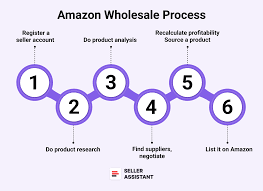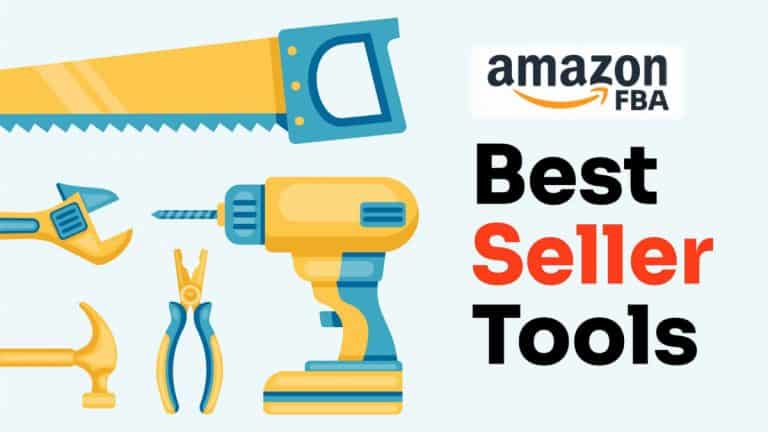How to Analyze Wholesale Product Profitability for Amazon FBA

Understanding the profitability of a wholesale product is crucial for running a successful Amazon FBA business. Without proper analysis, you risk investing in products that may not yield sufficient returns. This guide will help you assess wholesale product profitability and ensure you make informed decisions before purchasing inventory.
Understanding Amazon FBA Wholesale Profitability
Amazon FBA wholesale sellers buy products in bulk from manufacturers or distributors and resell them on Amazon. While this business model has great potential, profitability depends on multiple factors, including cost analysis, competition, and demand. To succeed, you need a systematic approach to evaluating whether a product will generate a strong return on investment (ROI).
Evaluating Product Costs
The first step in analyzing wholesale product profitability is calculating all associated costs. Many sellers underestimate expenses, which can lead to lower-than-expected margins. Key costs to consider include:
Product Cost: The amount you pay to purchase the wholesale product.
Shipping and Freight Fees: The cost of transporting inventory from the supplier to an Amazon fulfillment center.
Amazon FBA Fees: Amazon charges fulfillment fees, storage fees, and referral fees, which vary by product size and category.
Customs and Duties: If sourcing internationally, include import duties and taxes in your calculations.
Labeling and Packaging Costs: Amazon requires specific labeling and packaging, which may add extra expenses.
Marketing and PPC Costs: Running Amazon PPC ads and other marketing campaigns impacts profitability.
After listing these costs, subtract them from the selling price to determine the gross profit margin. A common goal is to maintain at least a 30% profit margin for sustainable business growth.
Assessing Market Demand and Sales Potential
A profitable product should have strong demand with consistent sales. To assess demand, use the following strategies:
Check Best Sellers Rank (BSR): A lower BSR in a relevant category indicates strong sales.
Analyze Monthly Sales Volume: Use tools like Jungle Scout or Helium 10 to estimate how many units a product sells per month.
Monitor Search Volume: High search volume for related keywords on Amazon suggests strong buyer interest.
Review Seasonality Trends: Some products sell well only during certain months, impacting year-round profitability.
If a product shows steady demand throughout the year, it is more likely to generate consistent revenue and profits.
Examining Competition and Pricing
Competition plays a significant role in determining whether a product will be profitable on Amazon. To analyze competition, consider:
Number of Competing Sellers: Too many sellers offering the same product can lead to price wars and reduced margins.
Brand Restrictions: Some manufacturers restrict new sellers from listing their products, limiting your ability to compete.
Pricing Trends: Look at historical price data to determine whether prices are stable or fluctuating.
Amazon as a Competitor: If Amazon sells the product directly, competing against them can be challenging.
Choosing products with moderate competition and stable pricing increases your chances of maintaining profitability over time.
Calculating Profit Margins and ROI
Once you’ve analyzed costs, demand, and competition, it's time to calculate profitability using Amazon’s FBA Revenue Calculator. This tool helps estimate:
Net Profit per Unit: Selling price minus all associated costs.
Profit Margin: (Net Profit ÷ Selling Price) × 100.
ROI (Return on Investment): (Net Profit ÷ Cost of Goods Sold) × 100.
A healthy ROI should be at least 50%, meaning you’re making $0.50 for every dollar invested in inventory. If the ROI is too low, consider alternative products with better margins.
Monitoring and Optimizing Profitability
Even after launching a product, continuous monitoring is essential to maintain profitability. Use Amazon seller tools to:
Track Sales Performance: Identify trends in sales volume and revenue.
Adjust Pricing: Optimize pricing based on competitor activity and demand fluctuations.
Reduce Storage Costs: Minimize long-term storage fees by managing inventory effectively.
Optimize PPC Campaigns: Lower advertising costs while maximizing conversions.
By regularly assessing product performance, you can make informed decisions on restocking, discontinuing, or scaling products.
Final Thoughts
Analyzing wholesale product profitability is a key step in building a successful Amazon FBA business. By considering costs, demand, competition, and ROI, you can minimize risks and maximize returns. Always use data-driven strategies to evaluate potential products and continuously optimize your approach to remain profitable in the ever-changing Amazon marketplace.





